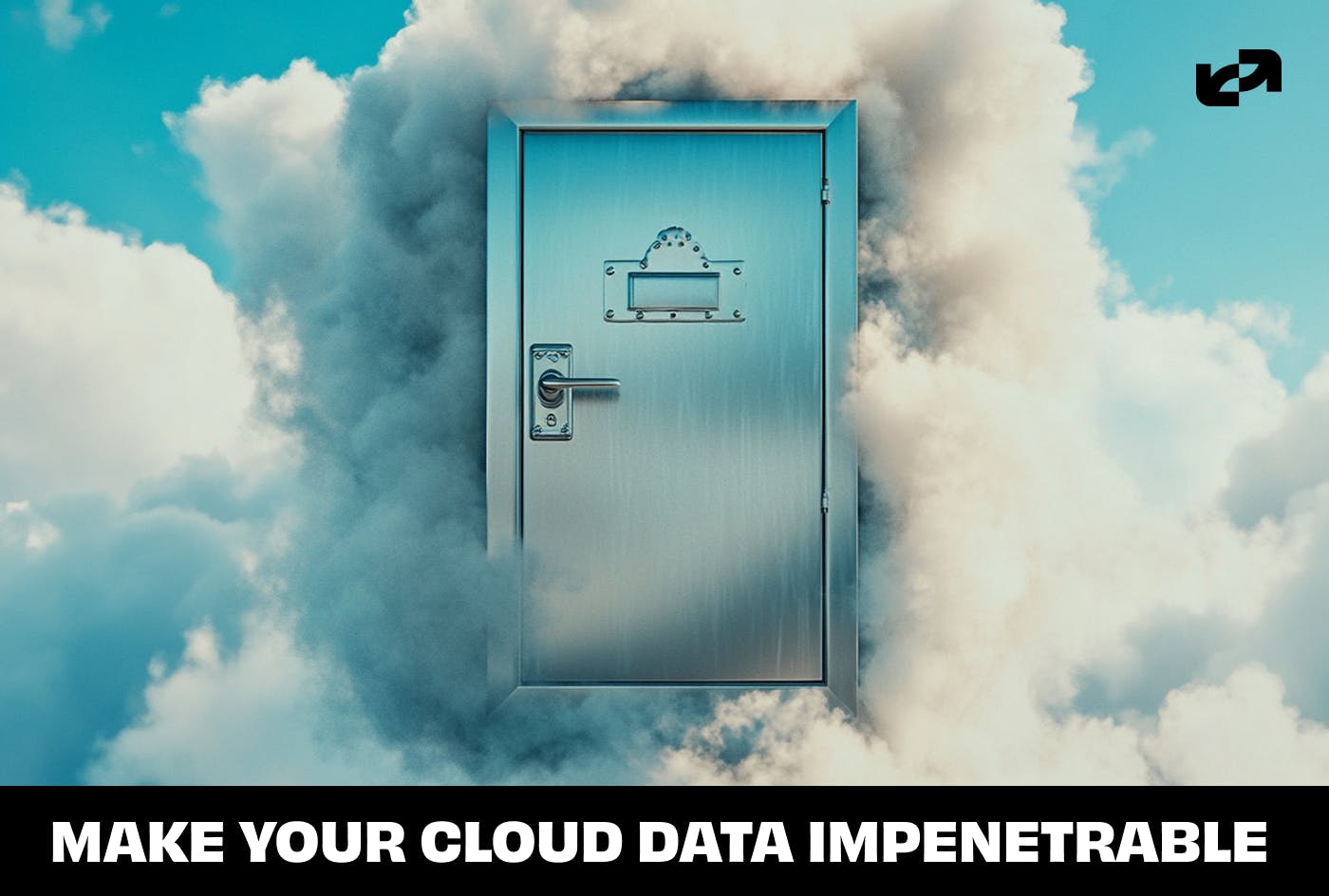What Are Immutable Backups?
Immutable backups are backups that cannot be altered or deleted once created, ensuring data remains in its original state and protected from ransomware attacks or accidental modifications.
The technology behind immutable backups involves locking the data for a specified retention period during which the data cannot be modified or deleted by anyone, including administrators. This approach provides an additional layer of security for backup data, protecting it from both internal and external threats.
Immutable backups are particularly important in compliance-driven environments where maintaining the integrity of data over time is a priority.
This is part of an extensive series of guides about cloud security.
In this article:
- Does Immutability Protect Against Ransomware?
- How Does Immutable Storage Work?
- Immutable Backups vs Traditional Backups
- Pros and Cons of Immutable Backups
- What to Look for in a Backup Provider that Supports Immutability?
- Best Practices for Immutable Backup Implementation
Does Immutability Protect Against Ransomware?
Immutability provides a solid defense against ransomware by ensuring that backup data cannot be altered or deleted once it has been written. Ransomware attacks typically involve encrypting or destroying data, making it inaccessible to the affected organization. With immutable backups, organizations can maintain a clean, unaltered copy of their data that can be restored in the event of an attack.
Ransomware attacks are increasingly prevalent—Gartner estimates that 75% of IT organizations will face such an incident by 2025. The anonymity of cryptocurrency and the rise of Ransomware as a Service (RaaS) contribute to this surge, making ransomware a profitable and accessible technique for cybercriminals.
However, immutable backups act as a final defense, ensuring that even if an attacker penetrates other defenses, the core data remains secure and recoverable. It helps block ransomware attacks because the attackers cannot alter the backup data. This allows organizations to restore their systems from these backups without yielding to ransom demands.
How Does Immutable Storage Work?
Immutable storage prevents any modification or deletion of data once it has been written. This is achieved through a combination of software mechanisms and policies that enforce a strict write-once-read-many (WORM) model. When data is stored in an immutable format, it is sealed against changes, creating a permanent record that can be relied upon for accurate recovery.
This process begins the moment data is backed up. During backup, data is transferred to the storage system where immutability policies are immediately applied. These policies dictate how long the data will remain unchangeable, ensuring compliance with internal governance and external regulatory requirements. It’s like placing data in a vault that can only be opened after a predefined period, if ever.
Immutable Backups vs Traditional Backups
Traditional backups can be modified or deleted by users with sufficient privileges. They require additional layers of security to protect against tampering and may still be vulnerable to sophisticated cyber threats.
Immutable backups are locked against any changes, even by users with high-level privileges. This ensures that backup data remains untouched and available even in the face of ransomware attacks or accidental modifications.
Related content: Read our guide to replication vs backup
Pros and Cons of Immutable Backups
The main advantages of immutable backups include:
- Enhanced security: Immutable backups protect against unauthorized changes, making them resilient to ransomware and other cyber threats.
- Data integrity: Immutability ensures that data remains in its original state, providing a reliable source for recovery and audit purposes.
- Regulatory compliance: They help organizations meet compliance requirements by ensuring data integrity and retention over specified periods.
Immutable backups also come with certain limitations:
- Increased storage costs: Since data cannot be altered or deleted before the end of its immutability period, organizations may find themselves storing large volumes of redundant or unnecessary data.
- Management complexity: Implementing and maintaining an immutable backup solution requires careful planning to balance protection needs with storage costs and regulatory compliance requirements.
- Rigidity: Immutability restricts the ability to modify or purge data in response to changing business or legal circumstances. This inflexibility requires a strategic approach to setting retention policies that align with operational needs and compliance mandates.
What to Look for in a Backup Provider that Supports Immutability?
When selecting a backup provider that supports immutability, it’s essential to consider several key factors to ensure adequate data protection and compliance with regulatory requirements. Here are the main criteria to evaluate:
- Immutability features: Ensure the provider offers true immutability, meaning that once data is written, it cannot be altered or deleted for a specified retention period. Verify that the immutability is enforced at the storage level and cannot be bypassed by any user, including administrators.
- Compliance and certification: Check that the backup provider complies with industry standards and regulations relevant to your organization, such as GDPR, HIPAA, or SOX. Look for certifications that demonstrate the provider’s commitment to security and data integrity, such as ISO 27001 or SOC 2.
- Data encryption: Confirm that the provider uses strong encryption methods to protect data both in transit and at rest. This ensures that even if the data is intercepted, it remains unreadable to unauthorized parties. Additionally, inquire about the provider’s key management practices to ensure secure handling of encryption keys.
- Scalability and performance: Evaluate the provider’s ability to scale with your organization’s data growth. The solution should support efficient data backup and recovery processes without compromising performance. Consider the speed of backup and restore operations, especially for large data volumes.
- Integration and compatibility: Ensure the backup solution integrates seamlessly with your existing IT infrastructure, including operating systems, applications, and other security tools. Compatibility with cloud environments and hybrid configurations is also crucial for a flexible and comprehensive backup strategy.
- Support and service level agreements (SLAs): Assess the provider’s customer support quality and the details of their SLAs. Look for 24/7 support availability, quick response times, and clear escalation procedures. The SLA should guarantee uptime and data availability to minimize disruptions during recovery scenarios.
- Cost and pricing model: Understand the provider’s pricing structure, including any costs associated with storage, data transfer, or additional features. Choose a provider with a transparent and predictable pricing model.
Best Practices for Immutable Backup Implementation
Here are some of the ways that organizations can ensure an effective immutable backup strategy.
Establish a Backup and Recovery Plan
The backup and recovery plan should specify the data to be backed up, the frequency of backups, and the retention period for each backup set. It’s crucial to identify critical data that requires immutability for enhanced protection and compliance purposes.
Additionally, the recovery objectives should be clearly defined, including recovery point objectives (RPOs) and recovery time objectives (RTOs), to ensure business continuity in the event of data loss or a cyberattack.
The backup and recovery plan must include procedures for testing backups regularly. This ensures that data can be restored successfully from immutable backups when needed. Testing helps identify any potential issues in the backup process, allowing for timely corrections and adjustments to the plan.
Implement Access Controls
By restricting access to backup data, organizations can prevent unauthorized users from attempting to bypass immutability protections. Access controls should be based on the principle of least privilege, ensuring that only users with a legitimate need can interact with backups. This minimizes the risk of accidental or malicious actions that could compromise data integrity.
Implementing role-based access control (RBAC) further strengthens security by defining the roles and permissions associated with backup operations. Regular audits of access logs are also important for detecting any unauthorized attempts to access or modify backup data.
Encrypt Data
By encrypting data both in transit and at rest, organizations ensure that even if unauthorized access is somehow gained, the data remains unreadable and useless to attackers. Implementing strong encryption standards, such as AES-256, provides a high level of security that meets industry best practices and compliance requirements.
Managing encryption keys is equally important. Secure key management practices prevent unauthorized access to encrypted backups. This involves storing keys in secure locations, using hardware security modules (HSMs) when possible, and regularly rotating keys to mitigate the risk of compromise.
Making Immutable Backups Easier with N2W
N2W simplifies the implementation of immutable backups with advanced features that improve data protection and recovery capabilities. N2W has several powerful capabilities that simplify the management and increase the reliability of immutable backups:
- Cost Effective Compliance Locking Immutability for both the long-term and short-term
- Cross-cloud volume restore: Enables seamless backup of AWS servers with volume restoration in Azure, ensuring robust data isolation and compliance.
- DynamoDB support: Now supports cross-region and cross-account backup and restore, improving resilience against outages and malicious activities.
- Time-based retention: Offers flexible backup retention options to meet diverse data management needs.
- Compliance-mode immutability: Ensures tamper-proof backups in EBS, S3, and Azure, protecting against unauthorized changes and deletions.
- Enhanced monitoring: Comprehensive policy reports for better management and oversight of backup policies.
Written by: Sebastian Straub










